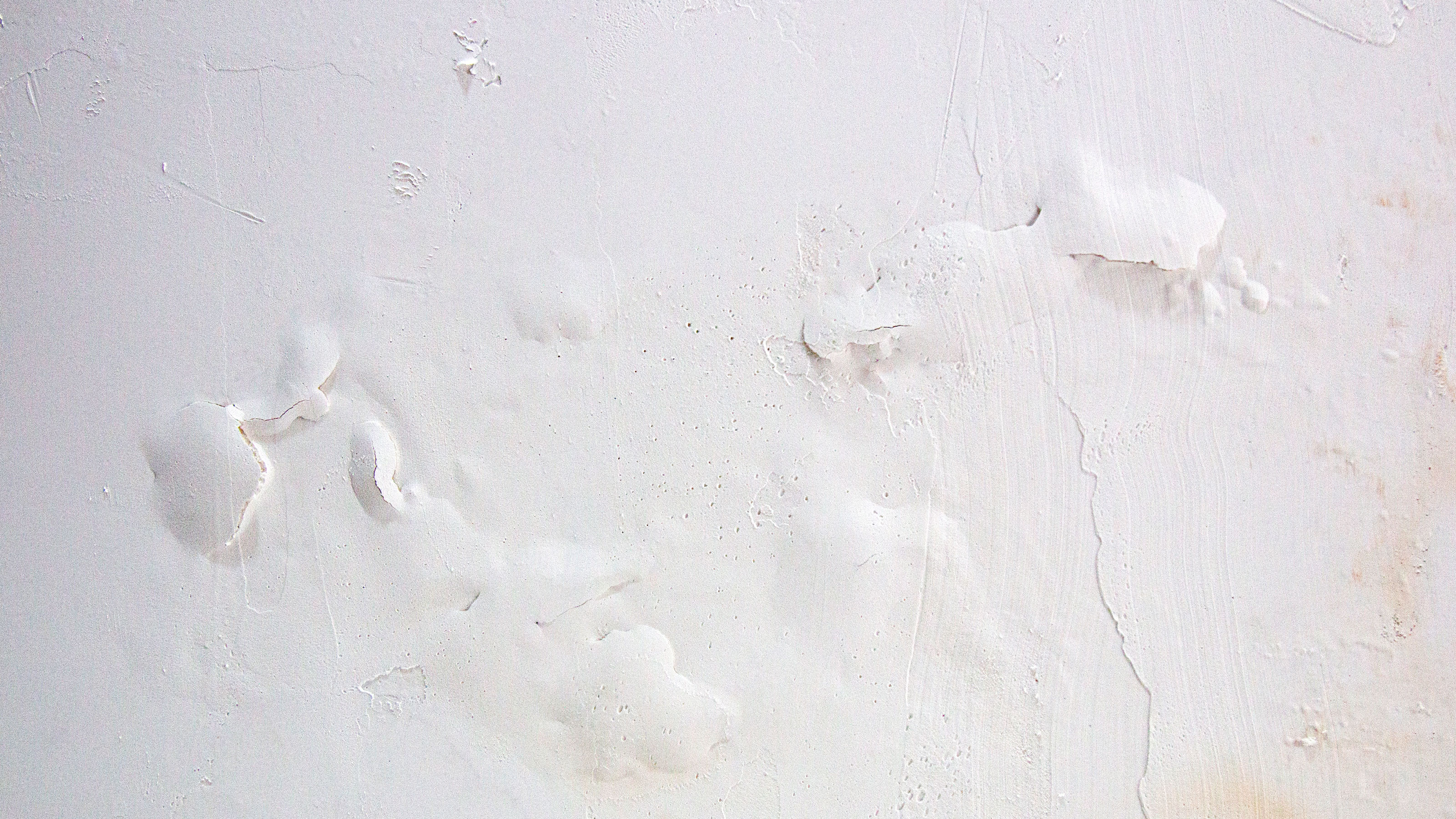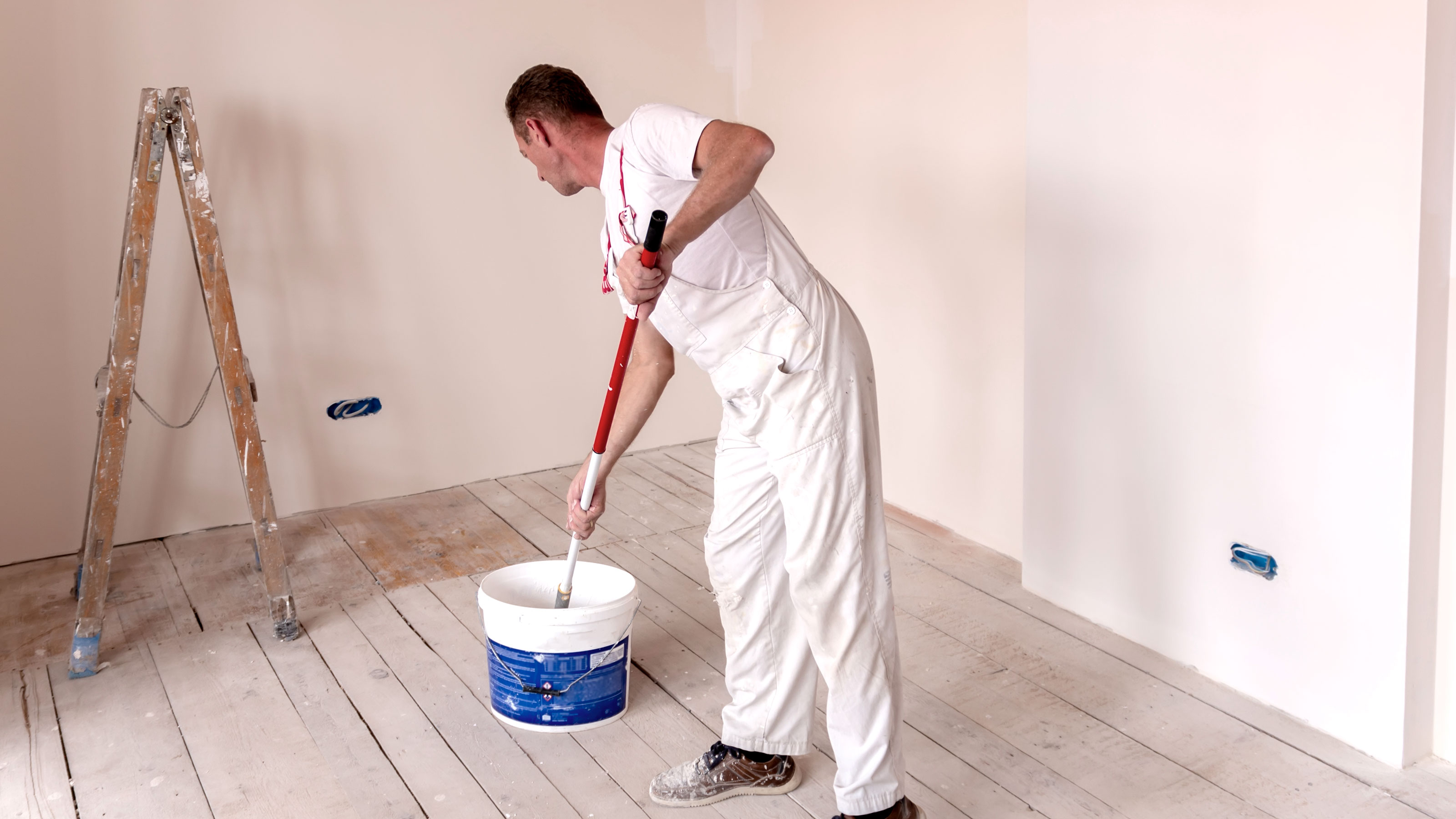Why is paint bubbling? We have the answers and how to fix it
If you are asking yourself why is paint bubbling you have come to the right place. Here we reveal the reasons it happens and what you can do to stop it

Why is paint bubbling isn’t a question you want to ask once you have finished a paint project. You want a smooth, smart finish that looks good and stays that way. But, if it does happen you’ll want to know why, so you don’t repeat the problem on another paint project.
It can happen whether you’re painting wood or emulsioning walls, so you need to make sure that you get your prep right to stop any ugly blisters appearing. While prevention is the preferred choice, you also need to know how to deal with blisters and bubbles after they happen. Here we tell you what you need to know and do.
Reasons why is paint bubbling
No DIYer wants their paint to bubble and blister, so to make sure that it doesn't happen on future paint projects you need to know what causes it before you get out your paint brushes and rollers. Unfortunately, there’s no single reason why it occurs, there’s a multitude of factors that can cause you problems as Jamie Hancox, Managing Director at national paint brand, Tikkurila lists:
High Temperatures: Painting in direct sunlight or on surfaces with elevated temperatures can cause rapid drying, trapping moisture vapour and forming blisters.
Reaction with surface: Contaminants such as oil on surfaces can cause localised blistering. Using latex-based products over surfaces with high vinyl content can also result in chemical reactions.
Loss of Adhesion: Insufficient preparation, incorrect primers, or inadequate bonding between coats.
One of the most common reasons for bubbling paint is the loss of adhesion with the surface that is being painted. This is typically because the surface hasn’t been cleaned properly, so when the paint dries it starts to lift off the surface.
Preparing walls for painting is essential to getting a decent bubble free finish. You can clean the surface by wiping down with a soft cloth and warm soapy water. This will get rid of most dirt and stains – and don't forget to wipe dry and leave to dry properly before painting. If you have more stubborn stains or marks check out our What is sugar soap guide to find out how to use it to clean surfaces.
How can I prevent paint from bubbling?
The first step is to clean your surface properly by following the steps above then you are much less likely to encounter problems. But, cleaning surface is not the only solution as Hancox suggests:
Apply Appropriate Primer: Applying a primer, such as Optiva Primer, to prevent vinyl reactions.
Paint in Suitable Conditions: Avoid painting in extremely hot conditions, reduce temperatures (substrate or atmospheric), avoid direct sunlight, and ensure good ventilation to slow the drying process.
If you follow these steps bubbling and blistering are very unlikely to occur on your painted surfaces.
How do you fix bubbles in paint?
How you fix bubbles and blistering on painted surfaces depends on the reason why paint is bubbling. If it's because surfaces haven’t been cleaned properly then you need to strip back and start again. Hancox suggests, “If blistering occurs, strip the affected area back to the bare substrate and ensure proper adhesion during repainting.”
Stripping back to bare brick walls isn't always necessary, but if the problem is being caused by damp or water ingress into the brickwork below the painted surface then this is a good idea.
However, if the bubbling or blistering is just on top of the surface, get a scraper to remove the affected paint, rub down the area with a fine grade sandpaper, apply an oil-based primer like Zinsser Cover Stain from Amazon and and leave to dry as recommended by manufacturer. Now your surface is ready to paint.
Why is my painted plaster wall bubbling?
The main reason that paint on newly plastered walls starts bubbling is due to moisture trapped in the plaster. When painting new plaster it's common that the wall is painted before the plaster has dried properly.
If it's old plaster then this would indicate that there is a damp problem that needs to be dealt with. Once the problem has been dealt, mould spores or contaminant salts can still reside in the plaster so you may need to replaster before painting.

Why is my paint bubbling after getting wet?
All paints are waterproof to a certain degree, so if they get splashed with water, it should simply run off the paint. But, if a paint is regularly exposed to water, it will eventually weaken the paint, which will lead to water getting underneath the paint which will lead to bubbling and blistering.
There is no foolproof method to stop this happening other than to regularly rub down (if wood) or prep the surface and add a new coat - or two - of paint, under the right conditions.
If the issue lies in the surface below the paint, i.e damp, then you will need to deal with this before you repaint, otherwise you will never solve the problem.
Why is paint bubbling on the second coat?
There can be a few reasons for this, but the most common reason is that you haven’t let the first coat dry properly, before applying the second coat. The first coat may not be evenly spread meaning that there are areas that dry quicker than other areas. So before you add a second coat test to make sure all paint is dry.
Alternatively, it might be that something like greasy fingerprints, water, has got onto the first coat of paint which is causing the loss of adhesion on the second coat. The simple solution is to check the surface before painting. If needed, clean, prep and leave to dry.
Get the Homebuilding & Renovating Newsletter
Bring your dream home to life with expert advice, how to guides and design inspiration. Sign up for our newsletter and get two free tickets to a Homebuilding & Renovating Show near you.
Steve Jenkins is a freelance content creator with over two decades of experience working in digital and print and was previously the DIY content editor for Homebuilding & Renovating.
He is a keen DIYer with over 20 years of experience in transforming and renovating the many homes he has lived in. He specialises in painting and decorating, but has a wide range of skills gleaned from working in the building trade for around 10 years and spending time at night school learning how to plaster and plumb.
He has fitted kitchens, tiled bathrooms and kitchens, laid many floors, built partition walls, plastered walls, plumbed in bathrooms, worked on loft conversions and much more. And when he's not sure how to tackle a DIY project he has a wide network of friends – including plumbers, gas engineers, tilers, carpenters, painters and decorators, electricians and builders – in the trade to call upon.

